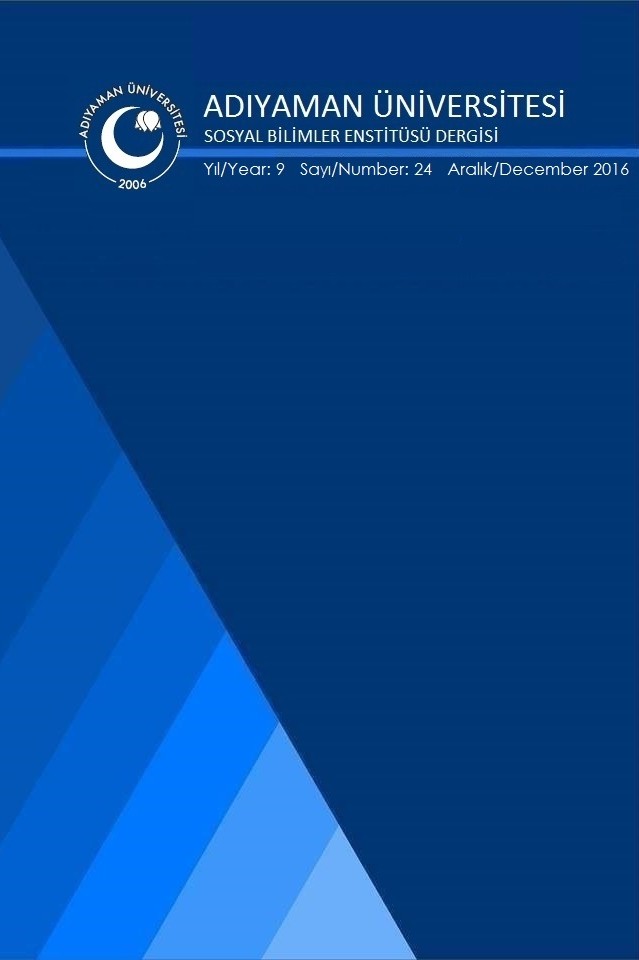RUSHDIE'NİN GECEYARISI ÇOCUKLARI VE GRASS'IN TENEKE TRAMPET ADLI ROMANLARINDA TARİH İLE BÜTÜNLEŞMİŞ BEDENLER
Salman Rushdie ve Günter Grass yazdıkları eserlerle daima eleştirmenlerin dikkatlerini üzerlerine çekmişlerdir. Ülke tarihine ışık tutma noktasında çok büyük öneme sahip olan Günter Grass’ın Teneke Trampet ve Salman Rushdie’nin Geceyarısı Çocukları adlı romanlarında yazarlar, ana vatanlarının tarihinin en önemli dönemlerini yansıtmaya çalışmışlardır. Grass, Alman tarihinin kırılma noktası olan Hitler dönemi ve sonrasını ele alırken, Rushdie bağımsız Hindistan’ın doğuşuyla ilgilenmiştir. Her iki yazar da bahsini ettikleri dönemin ulus üzerinde meydana getirdiği olumlu ve olumsuz yönlerini eserlerinde işler. Her iki romanda; kimlik, tarih, postmodernizm, metinlerarasılık, tarihyazımsal üst kurgu gibi zengin öğeleri gözlemlemek kaçınılmazdır. Bu bağlamda her iki romanın ana karakteri, bu çalışmada değinildiği üzere, ana vatanları ile aynı yazgıya sahiptirler.
Anahtar Kelimeler:
Geceyarısı Çocukları, Günter Grass, Salman Rushdie, tarih, Teneke Trampet.
THE BODIES COALESCED WITH HISTORY IN RUSHDIE'S MIDNIGHT'S CHILDREN AND GRASS' THE TIN DRUM
Salman Rushdie and Günter Grass always attract the readers' attention with their fabulous novels. In their novels titled Tin Drum by Günter Grass and Midnight's Children by Salman Rushdie having much importance to irradiate their homeland's history, the authors indicate the most important incidences in their history. While Grass deals with Hitler's period and his aftermath, Rushdie concerns about the birth of independent India. Both writers pen the advantage and disadvantage aspects of the then term in the society. A great number of terms, such as identity, history, postmodernism, intertextuality, histographic metafiction can be easily observed in the novels. In this context, the protagonists of these two novels have the same destiny with their homeland, which is emphasized in this study.
Keywords:
Midnight's Children, Günter Grass, Salman Rushdie, history, The Tin Drum.,
___
Bader, R. (1984). “Indian Tin Drum.” International Fiction Review, 11: 75-83.Booker, M. K. (1990). “Beauty and The Beast: Dualism As Despotism in The Fiction of Salman Rushdie.” ELH, 57 (4): 977-997.
Dayal, S. (1992). “Talking Dirty: Salman Rushdie's Midnight's Children.” College English, 54(4): 431-445.
Goel, S. (2004). Salman Rushdie’s Midnight’s Children Contemporary Indian Writing in English: Critical Perceptions, (38) New Delhi; Sarup& Sons.
Grass, G. (2000). Teneke Trampet. Çev., Kamuran Şipal, İstanbul: Cem Yayınevi.
Heffernan, T. (2000). “Apocalyptic Narratives: The Nation in Salman Rushdie's Midnight's Children.” Twentieth Century Literature, 46 (4 ): 470-491.
Ireland, K. R. (1990). “Doing Very Dangerous Things: Die Blechtrommel and Midnight's Children.” Comparative Literature, 42 (4): 335-361.
Kane, J. M. (1996). “The Migrant Intellectual and the Body of History: Salman Rushdie's Midnight's Children.” Contemporary Literature, 37(1): 94-118.
Karamcheti, I. (1986). “Salman Rushdie's Midnight's Children and an Alternate Genesis,.”Pacific Coast Philology, 21(1): 81-84.
Marroucbi, M. (1999). “Fear of the Other, Loathing the Similar.” College Literature, 26(2): 17-58.
Mohammed, P. (1997). “Midnight's Children and The Legacy of Nationalism.” Callaloo, 20(4): 737-752.
Prakash, G. (1990). “Writing Post-Orientalist Histories of the Third World: Perspectives from Indian Historiography.” Comparative Studies in Society and History, 32(2): 383-40
Roosa, J. & Ratih, A. (2001) “Solipsism or Solidarity The Nation, Pramoedya Ananta Toer and Salman Rushdie.” Economic and Political Weekly, 36(28): 2681-2688. Rushdie, S. (2008) Geceyarısı Çocukları. Çev., Aslı Biçen, İstanbul: Metis Yayıncılık.
Stewart, A. J. ve Duncan, L. E. (2007). “Personal Political Salience: The Role of Personality in Collective Identity and Action.” Political Psychology, 28 (2): 14316
Weisberg, R. (1998). “Why They're Censoring "The Tin Drum: Kristallnacht" Reflections on the End of the Epic.” Cardozo Studies in Law and Literature, 10 (2): 161-181. Winner, A. (1997). “Story's Gamble With History.” The Kenyon Review, 19 (2): 148-169
- ISSN: 1308-9196
- Yayın Aralığı: Yılda 3 Sayı
- Başlangıç: 2008
- Yayıncı: Adıyaman Üniversitesi
Sayıdaki Diğer Makaleler
Mehmet Sedat İPAR, Mustafa DOĞAN
ÖĞRETMEN BAKIŞ AÇILARINA GÖRE OKUL ÖNCESİ YÖNETİCİLERİNİN SAHİP OLMASI GEREKEN ÖZELLİKLER
Özge HACIFAZLIOĞLU, Mery SUSMAK
DİFÜZYON VE OSMOZ KAVRAMLARINA YÖNELİK TANI TESTİ GELİŞTİRİLMESİ VE UYGULANMASI
İL EĞİTİM DENETMENLERİNİN MESLEKİ GELİŞİMİNDE MENTORLUK
ORTAOKUL VE LİSE MATEMATİK ÖĞRETMENİ ADAYLARININ İSPAT YAPMAYA YÖNELİK GÖRÜŞLERİ
Melih TURĞUT, Kürşat YENİLMEZ, Candaş UYGAN
İLKÖĞRETİM BİRİNCİ KADEME İÇİN ÇEVREYE YÖNELİK TUTUM ÖLÇEĞİ: GEÇERLİK VE GÜVENİRLİK ÇALIŞMASI
